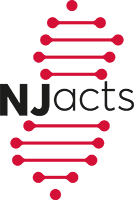 For people hospitalized with COVID-19, two new risk-prediction tools, tested in part using the NCATS National COVID Cohort Collaborative (N3C), could help clinicians make faster, better treatment decisions. The tools use a patient’s age and five common lab tests to analyze their risk of death more rapidly and accurately. Scientists at Rutgers University reviewed health records from 969 adults hospitalized with COVID-19 from March to May 2020. The researchers used machine learning to examine 77 patient-health variables and find optimal combinations that best predicted severe COVID-19 outcomes.
For people hospitalized with COVID-19, two new risk-prediction tools, tested in part using the NCATS National COVID Cohort Collaborative (N3C), could help clinicians make faster, better treatment decisions. The tools use a patient’s age and five common lab tests to analyze their risk of death more rapidly and accurately. Scientists at Rutgers University reviewed health records from 969 adults hospitalized with COVID-19 from March to May 2020. The researchers used machine learning to examine 77 patient-health variables and find optimal combinations that best predicted severe COVID-19 outcomes.
The machine-learning analysis led to the discovery of two particularly predictive models, named PLABAC and PRABLE. Each model includes four shared patient-health variables: age, platelet count, lactate and blood urea nitrogen. PLABAC adds aspartate aminotransferase and C-reactive protein, and PRABLE uses red cell distribution width and eosinophil count. To read the full story.
